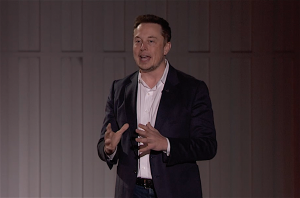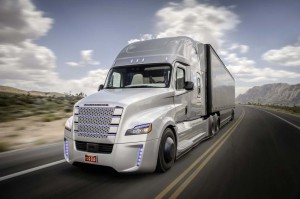Not long ago, Tesla founder and CEO Elon Musk outlined the company’s future products. The list included a semi-truck, which he likened to driving a go-kart.
That truck appears to be an autonomous reality as the company is asking Nevada if it can conduct real-world testing in the Silver State, according to the company’s testing permit application with the Nevada Department of Motor Vehicles, Reuters reported.
The EV semi isn’t all that surprising as Musk has mentioned it on several occasions, including in a tweet not too long ago. “Tesla Semi truck unveil set for September,” Musk said a few months back, the tweet adding, “Team has done an amazing job. Seriously next level.”
At the time, no further details were revealed, however, he did mention during a TED talk that the goal was to produce a truck that would pull a comparable diesel truck uphill in a truck tug of war. Now more details are coming to the surface, and the autonomous capability was a big surprise.
The company’s new truck can move in “platoons” that follow a lead vehicle, much like Volvo’s autonomous truck. It will be ready in September, as Musk said in the tweet from April. Other companies have produced a similar concept, led by Silicon Valley start up Peloton Technology. The advantage to this kind of vehicle is that it cuts down on the need for drivers.
(Tesla’s had trucks in the portfolio plan for some time. For the story, Click Here.)
Tesla isn’t just looking to test in Nevada, according to Reuters, it will be meeting with officials in California to discuss autonomous testing there as well. DMV spokeswoman Jessica Gonzalez Tesla requested a meeting to introduce new staff and talk about Tesla’s autonomous trucks. She said that the DMV was not aware of the level of autonomy in the trucks.
The testing in Nevada would be different than existing programs for other companies, like Daimler AG’s Freightliner subsidiary, where there are drivers behind the wheel in the event of a problem. Tesla’s “platoon” set up would mean there are trucks without operators in the cab. Nevada has not signed off on any testing.
Non-electric semi-trucks have been engaged in serious testing for much of the last year. Last October, start-up Otto made headlines by using its own driverless prototype to deliver a load of beer for Anheuser-Busch, driving it 120 miles across Colorado, from the brewery to a distribution center.
Otto is now a subsidiary of Uber, which just launched its own trucking equivalent of ride-sharing. Waymo also has an autonomous semi-truck program underway.
Experts believe driverless trucks will be safer and, by eliminating the federal restrictions placed on drivers as to how much time they can spend behind the wheel, the heavy haulers would be able to run around the clock, potentially trimming significant amounts of time off cross-country routes.
(Click Here for details about Teamsters push into shaping autonomous truck rules.)
Ironically, another factor driving interest in autonomy is the ongoing shortage of professional truck drivers.
At worst, the International Transport Forum study estimated 4.4 million out of 6.4 million trucking jobs could be eliminated by 2030 in the United States and Europe.
How many ultimately go will depend, in part, on how broadly driverless technology is adopted. The general consensus is that such vehicles would readily fall into use on medium and long hauls, where drivers simply transport cargo from factory to store, for example, or between distribution points. There, local employees could handle loading and unloading duties.
The bigger challenge would be to put them into operation on delivery routes, such as those run by FedEx, the Post Office or UPS – though the potential financial savings could be enormous, experts contend.
A variety of solutions are being proposed for the so-called “last mile” challenge, such as getting a package from the truck to a consumer’s door or a store’s counter.
(To see more about Waymo moving into the autonomous truck sector, Click Here.)
In the meantime, several manufacturers are working up short to medium-range driverless delivery vehicles, including Ford and Daimler. Both have hopes of putting their first models into production no later than 2022.


